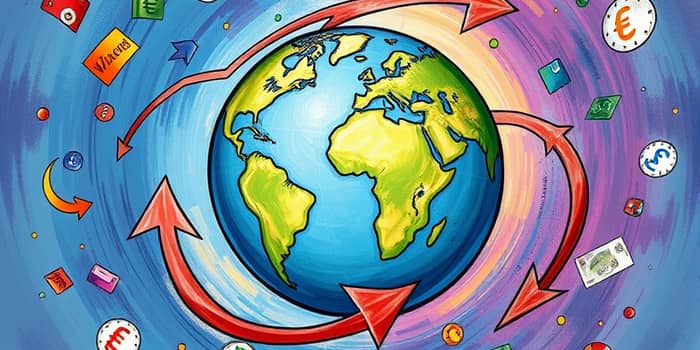
In an interconnected world, the ebb and flow of exchange rates can transform everyday choices—from the groceries we buy to the dreams we pursue abroad. Understanding these forces empowers individuals and businesses to navigate uncertainty, seize opportunities, and protect their hard-earned resources.
As 2024 gave way to 2025, the global financial landscape has seen dramatic shifts: the U.S. dollar’s unexpected decline, the euro’s struggle beneath mounting pressures, and emerging currencies poised on a knife’s edge. This article explores the mechanics, consequences, and strategic responses that shape our global purchasing power.
At its core, currency fluctuations refer to frequent changes in exchange rates between two currencies. Such variations arise from a complex interplay of economic policies, market sentiment, and geopolitical events.
Together, these factors create a dynamic environment where the relative value of money can surge or plunge in a matter of days—if not hours.
After a robust 2024—when the U.S. dollar climbed 7% against a basket of currencies—the tide turned in early 2025. A wave of protectionist trade measures and tariffs caused the dollar to lose 6% year-to-date, tightening global trade flows and prompting emerging economies to reassess their foreign exchange reserves.
The euro, meanwhile, has been under downward pressure. Slower growth across the Eurozone, coupled with U.S. policy unpredictability, risks pushing the euro below parity with the dollar. European leaders are responding by exploring joint debt issuance to bolster the currency’s international appeal.
Currency movements have tangible consequences for consumers, businesses, and travelers worldwide. Understanding these effects is crucial for safeguarding budgets and optimizing spending decisions.
Consumer Experiences
Business Realities
The following table highlights key statistics that have defined the current period:
In the United States, manufacturing has grappled with unpredictable currency swings that erode export profitability during downturns. The Eurozone’s slower growth has intensified internal debates over fiscal solidarity and revival of shared sovereign debt instruments. Emerging markets, from Southeast Asia to Latin America, are navigating volatile capital flows, where sudden shifts in borrowing costs can determine national growth trajectories.
For global investors, currency movements alter investment returns on overseas assets. A strengthening home currency can erode gains made abroad, while a weaker currency can amplify them.
Key strategies include:
Such tactics can help investors protect portfolios against sudden currency storms and preserve long-term wealth.
Central banks and governments have responded with a mix of bold and cautious measures. The U.S. Federal Reserve’s rate cuts have dovetailed with fiscal tariffs, while the European Central Bank weighs unconventional debt pooling to support the euro. Meanwhile, emerging markets juggle inflation control against the risk of stifling growth.
Looking ahead, monetary policy divergence has caused record spreads in global bond markets, signaling that capital will continue seeking the most attractive yields—regardless of geography. Geopolitical flashpoints, from trade disputes to regional conflicts, remain unpredictable wild cards.
Currency fluctuations are more than abstract charts—they shape the cost of living, the viability of businesses, and the returns on investments. In this era of rapid change, staying informed and proactive is essential. By understanding the cheaper imports while dampening inflation dynamics, adopting flexible pricing, and employing robust hedging tools, individuals and companies can transform volatility from a threat into an opportunity.
Embrace the power of knowledge: monitor trends, refine strategies, and collaborate with advisors. In doing so, you can harness the currents of global finance to secure your purchasing power and drive sustainable growth in an unpredictable world.
References













